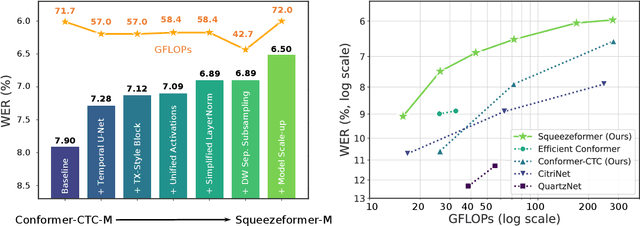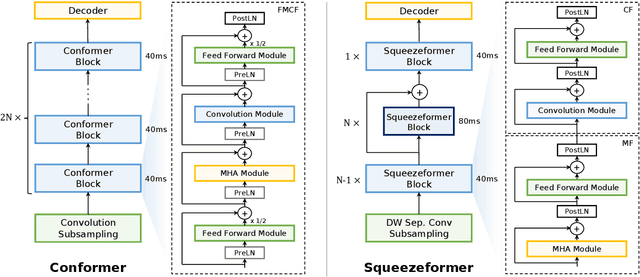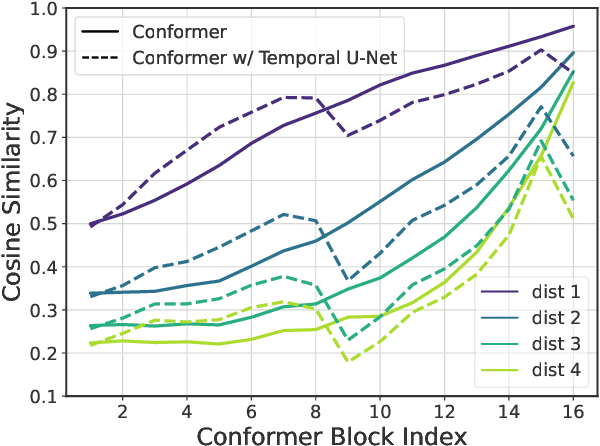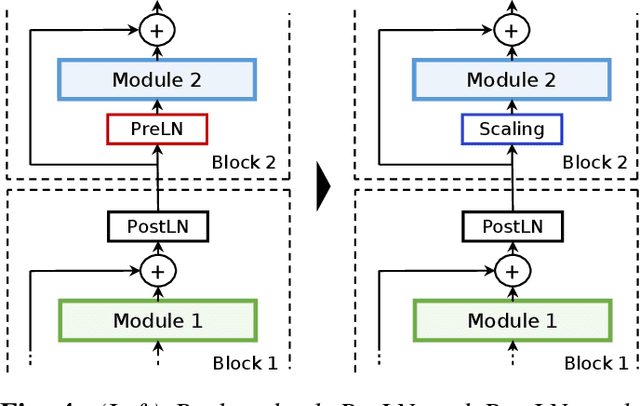Squeezeformer: An Efficient Transformer for Automatic Speech Recognition
Paper and Code
Jun 02, 2022



The recently proposed Conformer model has become the de facto backbone model for various downstream speech tasks based on its hybrid attention-convolution architecture that captures both local and global features. However, through a series of systematic studies, we find that the Conformer architecture's design choices are not optimal. After reexamining the design choices for both the macro and micro-architecture of Conformer, we propose the Squeezeformer model, which consistently outperforms the state-of-the-art ASR models under the same training schemes. In particular, for the macro-architecture, Squeezeformer incorporates (i) the Temporal U-Net structure, which reduces the cost of the multi-head attention modules on long sequences, and (ii) a simpler block structure of feed-forward module, followed up by multi-head attention or convolution modules, instead of the Macaron structure proposed in Conformer. Furthermore, for the micro-architecture, Squeezeformer (i) simplifies the activations in the convolutional block, (ii) removes redundant Layer Normalization operations, and (iii) incorporates an efficient depth-wise downsampling layer to efficiently sub-sample the input signal. Squeezeformer achieves state-of-the-art results of 7.5%, 6.5%, and 6.0% word-error-rate on Librispeech test-other without external language models. This is 3.1%, 1.4%, and 0.6% better than Conformer-CTC with the same number of FLOPs. Our code is open-sourced and available online.
 Add to Chrome
Add to Chrome Add to Firefox
Add to Firefox Add to Edge
Add to Edge